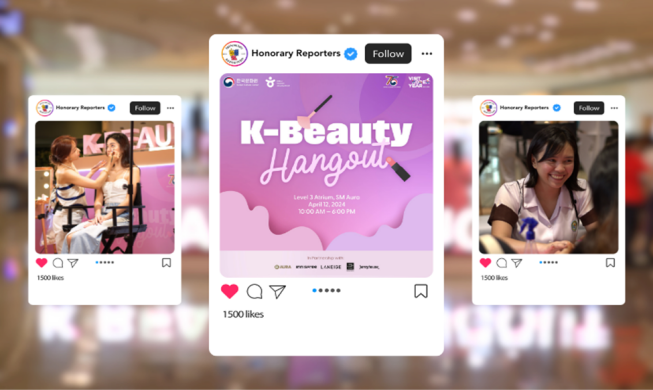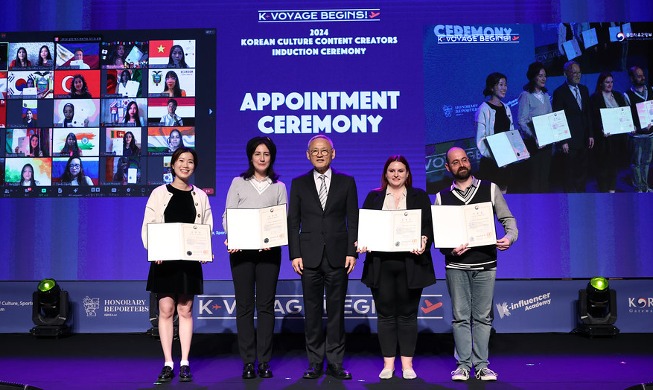-
 Korea.net's 24-hour YouTube channel
Korea.net's 24-hour YouTube channel- NEWS FOCUS
- ABOUT KOREA
- EVENTS
- RESOURCES
- GOVERNMENT
- ABOUT US

A sense of quietness is clearly palpable in the work of Michael Kenna, a 61-year-old British-born photographer who has become famous in Korea for his portrayal of a grove of pine trees on an island in Samcheok, Gangwon-do (Gangwon Province). Thin rays of sunlight pierce through the clouds, the sky is reflected on the tranquil, mirror-like sea and his landscape shot produces a sense of loneliness even though there are no people in the picture.
Since visiting Korea for the first time in 2005, he has now come to this country over ten times to take pictures. In 2007, he accidentally came across the grove of pine trees near Samcheok and took a photograph of the scenery as the dark fog on the sea was predicting heavy rain.
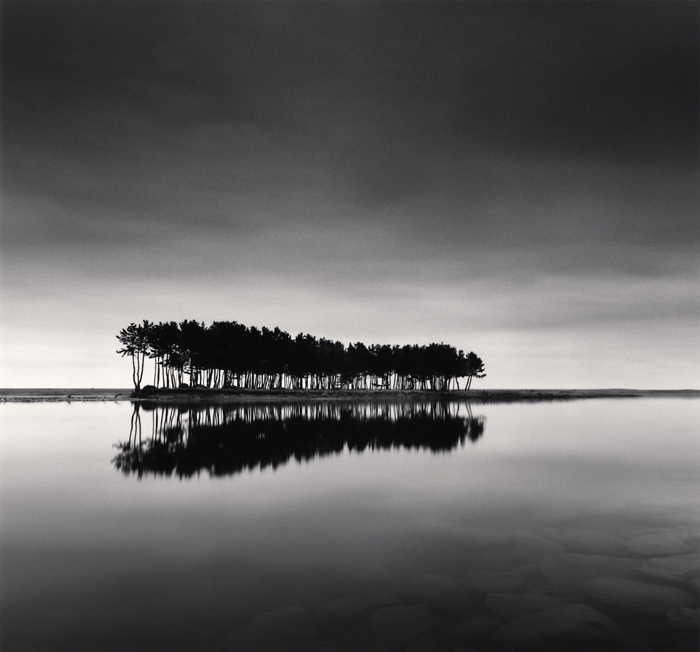
In a recent interview with Korea.net, Kenna said, “Fortunately, I took the time to make the very best image I could. The trees and island deserve the best. I was very fortunate. The conditions were perfect for me, with dark, brooding clouds right before a downpour of heavy rain. I think we were all lucky that day. There was a wonderful synchronicity. This is one of my favorite photographs.”
The pine tree island used to be unknown but since 2007 has become a popular spot for photographers and tourists alike due to Kenna’s photograph.
Kenna also took photographs of the archipelago near Sinan County, Jeollanam-do (South Jeolla Province), in the Yellow Sea. In 2011, he visited the area and took pictures of beautiful southern islands including Hongdo, Heuksando, Gageodo, Manjaedo and Jeungdo. He also took photographs of a seaweed farm after the tide went out, an abalone farm in the middle of the sea, a sparkling salt field as well as a tree-lined street in Damyang, Jeollanam-do. In Gangwon-do, he has taken famous pictures of the snow-covered mountains in Pyeongchang and some of his other famous shots were taken on Jejudo Island in the winter.
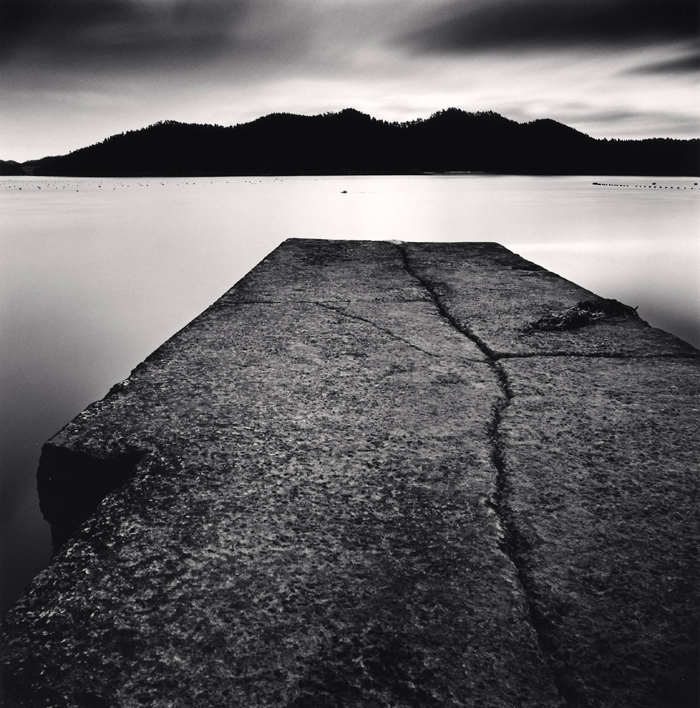
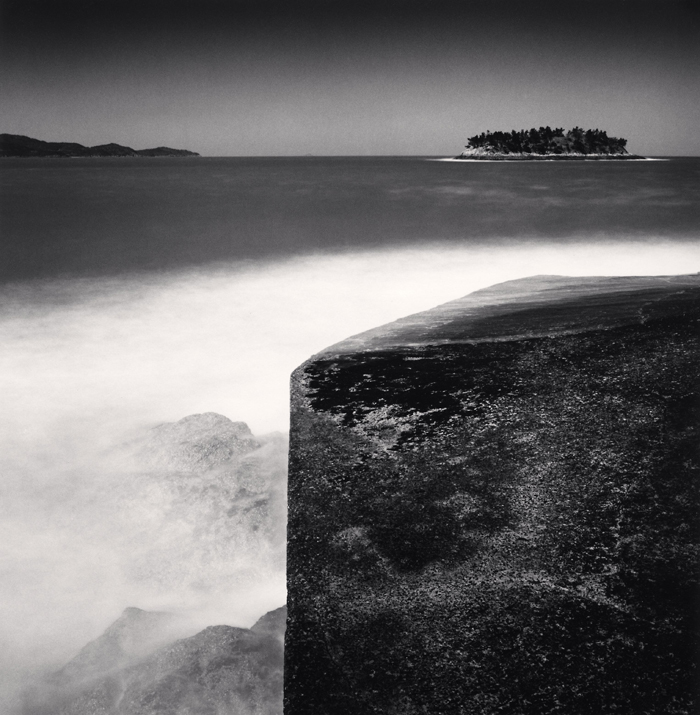
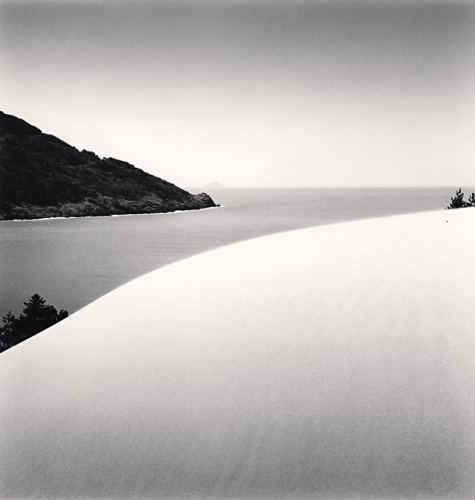
“I have been highly impressed with the Sinan archipelago,” Kenna said. “I’ve only photographed there four times but I’ve found a wealth of visual material to photograph. There are so many different islands, you’d need a lifetime to see them all.”
“Sinan is unspoiled and relatively undeveloped. These days, it is not so easy to find such places of natural beauty, where one can be seduced by pure nature. Earth, water and sky are in such diverse and complex combinations and variations. Conditions constantly change and nothing appears the same way twice,” he said.
As seen in the picture of the pine trees, Kenna always takes black-and-white photos of landscapes with no people in them. He tries to capture the “atmosphere left behind,” as he describes it, rather than specific images. He attributed his tendency to his upbringing. He grew up in an Irish Catholic family in Widnes in northwestern England. His family was not well off and he had to share a tiny house with his four brothers and one sister. He wanted to become a priest and entered the seminary. He spent seven years there and came to have a reverence for something he could not see.
“I woke up, sat down and started silent meditation. There was a light. I believed in these rituals. It has become a strong part of me,” he said.
Concerning his black-and-white landscape photographs, he said, “I’ve photographed in color many times, but I find black-and-white photographs to be more expressive, malleable and mysterious. Perhaps it is because we experience everyday life in color. Therefore, a rendering in black and white is immediately more special and recognizable as a subjective interpretation, rather than a photocopy of what has been seen. Color tends to be specific and descriptive, and I prefer suggestion over description. For me, the subtlety of black and white inspires the imagination of the individual viewer to complete the picture in their mind's eye. I believe it is calmer and gentler than color, and persists longer in our visual memory.”
“Nowadays, everything is faster, more colorful and noisier. Everything is cluttered these days. Time is spent in bits and pieces. I like to present work that slows people down and makes people calm. I like that calmness, almost like meditation. I like to present work that lets people feel they are in solitude rather than intimidated by it.”
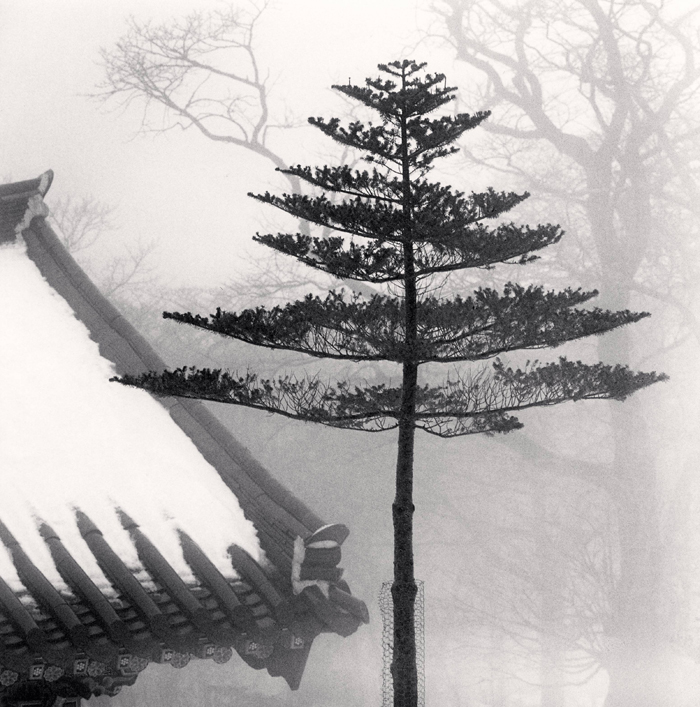
Throughout a typical year Kenna spends up to six months traveling around the world, photographing and holding exhibitions. The rest of the time he spends in Seattle, the U.S., with his family, including his wife, two children and mother-in-law. He still uses film cameras and prints his photographs in a traditional darkroom in his studio in Seattle.
“I have yet to meet a digital print that I could fall in love with,” he said. “This, of course, is based purely on my own personal and subjective taste. Having worked with silver materials and film cameras for 40 years, both commercially and in my own fine art work, I now find it a little out of character to fully embrace the digital medium.”
“For my part, however, I don’t need or desire instant gratification in photography and it is the long, slow journey to the final print that captivates me. I still prefer the limitations, imperfections and unpredictability of the silver based ’analog’ world and I love spending hours in the darkroom exploring the potential of a negative,” he added.
The photographs of Hongdo, Heuksando and Gageodo islands near Sinan are now on display at the Gallery KONG in northern Seoul. The “Journey to the East” exhibition is his third showing at the gallery.
“It has been a joy to discover this great country and I feel very honored and proud that Korean people seem to have an interest in my work. There is so much more to discover here so I hope to return on many more occasions,” he said.
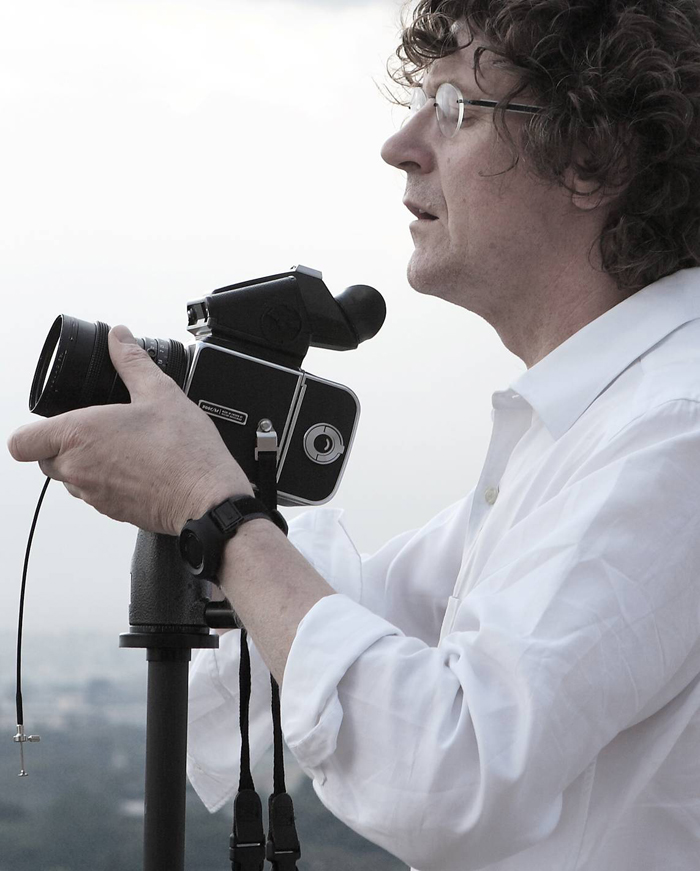
The exhibition continues until February 23. The gallery is open from 10 a.m. to 6 p.m. from Tuesday to Saturday, and from 12 p.m. to 6 p.m. on Sunday. It is closed on Mondays.
For more information, please call the gallery at 02-738-7776 or visit www.gallerykong.com.
By Limb Jae-un
Korea.net Staff Writer
jun2@korea.kr

Since visiting Korea for the first time in 2005, he has now come to this country over ten times to take pictures. In 2007, he accidentally came across the grove of pine trees near Samcheok and took a photograph of the scenery as the dark fog on the sea was predicting heavy rain.

“Pine Trees, Study 1, Wolcheon, Gangwondo, South Korea, 2007” (Photo courtesy of the Gallery KONG)
In a recent interview with Korea.net, Kenna said, “Fortunately, I took the time to make the very best image I could. The trees and island deserve the best. I was very fortunate. The conditions were perfect for me, with dark, brooding clouds right before a downpour of heavy rain. I think we were all lucky that day. There was a wonderful synchronicity. This is one of my favorite photographs.”
The pine tree island used to be unknown but since 2007 has become a popular spot for photographers and tourists alike due to Kenna’s photograph.
Kenna also took photographs of the archipelago near Sinan County, Jeollanam-do (South Jeolla Province), in the Yellow Sea. In 2011, he visited the area and took pictures of beautiful southern islands including Hongdo, Heuksando, Gageodo, Manjaedo and Jeungdo. He also took photographs of a seaweed farm after the tide went out, an abalone farm in the middle of the sea, a sparkling salt field as well as a tree-lined street in Damyang, Jeollanam-do. In Gangwon-do, he has taken famous pictures of the snow-covered mountains in Pyeongchang and some of his other famous shots were taken on Jejudo Island in the winter.

“Cracked Pier, Haeui-do, Shinan, South Korea, 2013” (Photo courtesy of the Gallery KONG)

“End of Pier, Jeung-do, Shinan, South Korea, 2012” (Photo courtesy of the Gallery KONG)

“Sand Dune, Wooi-do, Shinan, South Korea, 2012” (Photo courtesy of the Gallery KONG)
“I have been highly impressed with the Sinan archipelago,” Kenna said. “I’ve only photographed there four times but I’ve found a wealth of visual material to photograph. There are so many different islands, you’d need a lifetime to see them all.”
“Sinan is unspoiled and relatively undeveloped. These days, it is not so easy to find such places of natural beauty, where one can be seduced by pure nature. Earth, water and sky are in such diverse and complex combinations and variations. Conditions constantly change and nothing appears the same way twice,” he said.
As seen in the picture of the pine trees, Kenna always takes black-and-white photos of landscapes with no people in them. He tries to capture the “atmosphere left behind,” as he describes it, rather than specific images. He attributed his tendency to his upbringing. He grew up in an Irish Catholic family in Widnes in northwestern England. His family was not well off and he had to share a tiny house with his four brothers and one sister. He wanted to become a priest and entered the seminary. He spent seven years there and came to have a reverence for something he could not see.
“I woke up, sat down and started silent meditation. There was a light. I believed in these rituals. It has become a strong part of me,” he said.
Concerning his black-and-white landscape photographs, he said, “I’ve photographed in color many times, but I find black-and-white photographs to be more expressive, malleable and mysterious. Perhaps it is because we experience everyday life in color. Therefore, a rendering in black and white is immediately more special and recognizable as a subjective interpretation, rather than a photocopy of what has been seen. Color tends to be specific and descriptive, and I prefer suggestion over description. For me, the subtlety of black and white inspires the imagination of the individual viewer to complete the picture in their mind's eye. I believe it is calmer and gentler than color, and persists longer in our visual memory.”
“Nowadays, everything is faster, more colorful and noisier. Everything is cluttered these days. Time is spent in bits and pieces. I like to present work that slows people down and makes people calm. I like that calmness, almost like meditation. I like to present work that lets people feel they are in solitude rather than intimidated by it.”

“Temple Tree, Jonjaamji, Jeju Island, South Korea, 2012” (Photo courtesy of the Gallery KONG)
Throughout a typical year Kenna spends up to six months traveling around the world, photographing and holding exhibitions. The rest of the time he spends in Seattle, the U.S., with his family, including his wife, two children and mother-in-law. He still uses film cameras and prints his photographs in a traditional darkroom in his studio in Seattle.
“I have yet to meet a digital print that I could fall in love with,” he said. “This, of course, is based purely on my own personal and subjective taste. Having worked with silver materials and film cameras for 40 years, both commercially and in my own fine art work, I now find it a little out of character to fully embrace the digital medium.”
“For my part, however, I don’t need or desire instant gratification in photography and it is the long, slow journey to the final print that captivates me. I still prefer the limitations, imperfections and unpredictability of the silver based ’analog’ world and I love spending hours in the darkroom exploring the potential of a negative,” he added.
The photographs of Hongdo, Heuksando and Gageodo islands near Sinan are now on display at the Gallery KONG in northern Seoul. The “Journey to the East” exhibition is his third showing at the gallery.
“It has been a joy to discover this great country and I feel very honored and proud that Korean people seem to have an interest in my work. There is so much more to discover here so I hope to return on many more occasions,” he said.

Michael Kenna holds his film camera. (Photo courtesy of the Gallery KONG)
The exhibition continues until February 23. The gallery is open from 10 a.m. to 6 p.m. from Tuesday to Saturday, and from 12 p.m. to 6 p.m. on Sunday. It is closed on Mondays.
For more information, please call the gallery at 02-738-7776 or visit www.gallerykong.com.
By Limb Jae-un
Korea.net Staff Writer
jun2@korea.kr
Related Contents
Most popular
- Ceremony in Seoul inducts 2,641 content creators of Korean culture
- Event 'K-Beauty Hang Out' draws hundreds in Philippines
- Cultural spring festival Seoul Festa to start on May 1
- 'Mad Max' director impressed by 'cinema-literate' Korean viewers
- President, Romania pledge better defense, nuclear power ties



